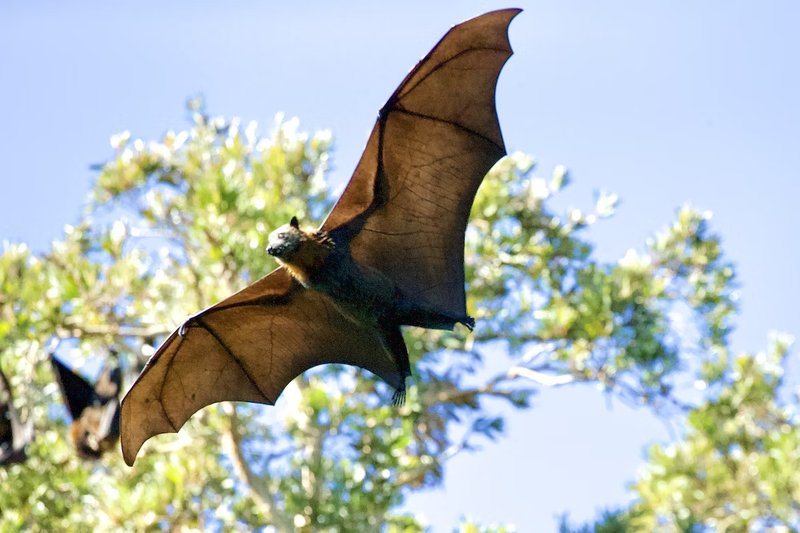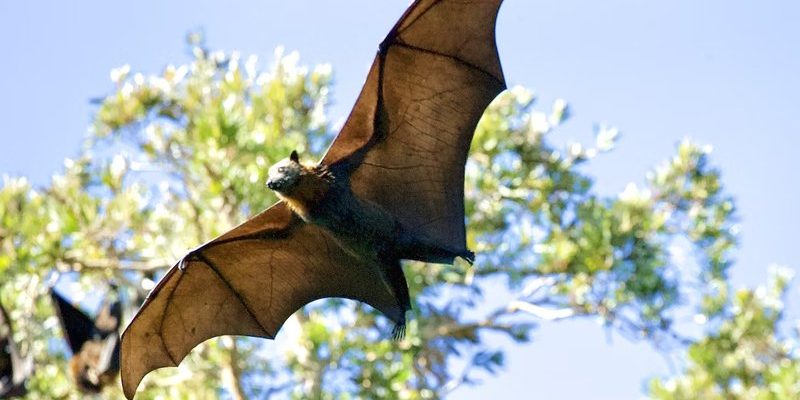
But before diving deep into their world, it’s worth noting that fruit bats, or *flying foxes*, belong to the Pteropodidae family. These bats are primarily vegetarian, feasting on fruits, nectar, and flowers. It’s easier to understand their significance when we realize they’re the ones helping to keep our forests healthy and vibrant!
Myth 1: All Bats Are Bloodsucking Creatures
You might be surprised to learn that, while some bats are known for their rather infamous bloodsucking habits, fruit bats are not among them. In fact, most fruit bats, including the popular flying foxes, thrive on a diet of fruit and nectar. Think of them more as nature’s gardeners. They help to pollinate flowers and spread seeds as they munch away, making sure our forests continue to thrive.
So why the confusion? Well, that old image of vampires lurking in the shadows casts a long shadow over the entire bat family. Just because a few species indulge in a diet of blood doesn’t mean the rest do too. To put it simply: just as not all dogs are wolves, not all bats are bloodsuckers.
Understanding Their Diet
– Fruits: Common fruits they love include bananas, figs, and mangoes.
– Nectar: They have a sweet tooth and play a big part in pollination.
– Flowers: Some species enjoy eating the flowers themselves.
So the next time you see a fruit bat hanging upside down, remember they’re simply waiting for their next fruity snack, not plotting to drain your blood.
Myth 2: They Are Disease-Ridden Pests
You might be wondering if fruit bats are just carriers of disease. Honestly, this misconception often stems from misunderstandings about the wildlife’s role in their ecosystems. While it’s true that some bats can carry diseases, fruit bats are not inherently disease-ridden. Like any animal, they can harbor pathogens, but this is not a reflection of their character.
Think of it this way: every species has the potential to carry diseases, including house pets! It’s the habitat and environment that truly matter. In fact, fruit bats contribute positively to the ecosystem by helping in seed dispersal and pollination, which in turn supports biodiversity.
Why They Matter for Human Health
– Ecosystem Services: They help maintain the health of forests, which service our air quality and carbon levels.
– Pollination: Many of the fruits and nuts we eat depend on bats to pollinate them. Without them, our food supply could be affected.
Being aware of their importance can help shift the narrative from fear to admiration.
Myth 3: All Fruit Bats are Huge
Sure, some fruit bats, like the Giant Golden-Crowned Flying Fox, can have a wingspan of up to six feet, but not all fruit bats are giants. Many species are much smaller and fit into the palm of your hand. They range from the tiny *Mango Bat*, with a wingspan of about 20 inches, to the larger species that could be mistaken for small airplanes.
The size variation can make it easy to overgeneralize about fruit bats, but just as no one group of people looks the same, neither do bats!
Size and Habitat Variations
– Small Species: Many fruit bats are quite small, living in trees or caves where they can easily blend in.
– Large Species: While the larger species may be eye-catching (and a little intimidating), they mostly dine on the same foods as their smaller cousins.
Understanding that species can vary greatly helps debunk the myth that all fruit bats are these enormous, scary creatures.
Myth 4: They Are Aggressive and Dangerous
When it comes to fruit bats, there’s a common misconception that they are aggressive toward humans. Here’s the thing: fruit bats are typically shy and prefer to avoid contact. In cases where they feel threatened, they may flap their wings or make some noise to show they’re not interested in a confrontation.
Just like any wild animal, fruit bats will defend themselves if cornered, but they’re generally more interested in munching on fruits than causing harm. It’s essential to give them space, just like you would with any other wildlife.
Positive Encounters
– Watching: Fruit bats can be fascinating to observe as they glide through the air at dusk.
– Conservation: Many organizations work tirelessly to protect fruit bats and their habitats, which helps reduce human-wildlife conflicts.
By respecting their space and understanding their behavior, we can foster a peaceful coexistence.
Myth 5: They Don’t Play a Role in Their Environment
Some folks might think that fruit bats have little influence on their environment. That’s a big misconception! These animals are crucial for the health of their ecosystems. As pollinators and seed dispersers, they help maintain plant populations, which support entire food webs. Without them, many plants would struggle to reproduce, affecting everything from local wildlife to human agriculture.
Imagine a grocery store without fruits and vegetables. It would be hard to shop for a healthy meal, right? In the natural world, fruit bats help ensure we have plenty of options by supporting the growth of various plants.
Supporting Biodiversity
– Seed Dispersal: They eat fruits and spread seeds through their droppings, allowing new plants to take root.
– Pollination: Many plants rely on fruit bats for reproduction, making them essential to their ecological balance.
Understanding their vital role can help us appreciate fruit bats even more.
Final Thoughts on Fruit Bats
Fruit bats might not be the scary creatures they’re often made out to be. With their gentle nature, important ecological contributions, and fascinating lifestyles, they are truly deserving of our admiration. By debunking these myths, we not only get to appreciate their role in nature but also work toward protecting them.
So, the next time you come across a fruit bat, take a moment to reflect on their value and beauty in our world. They are not just flying mammals but also essential partners in maintaining the balance of our ecosystems.

